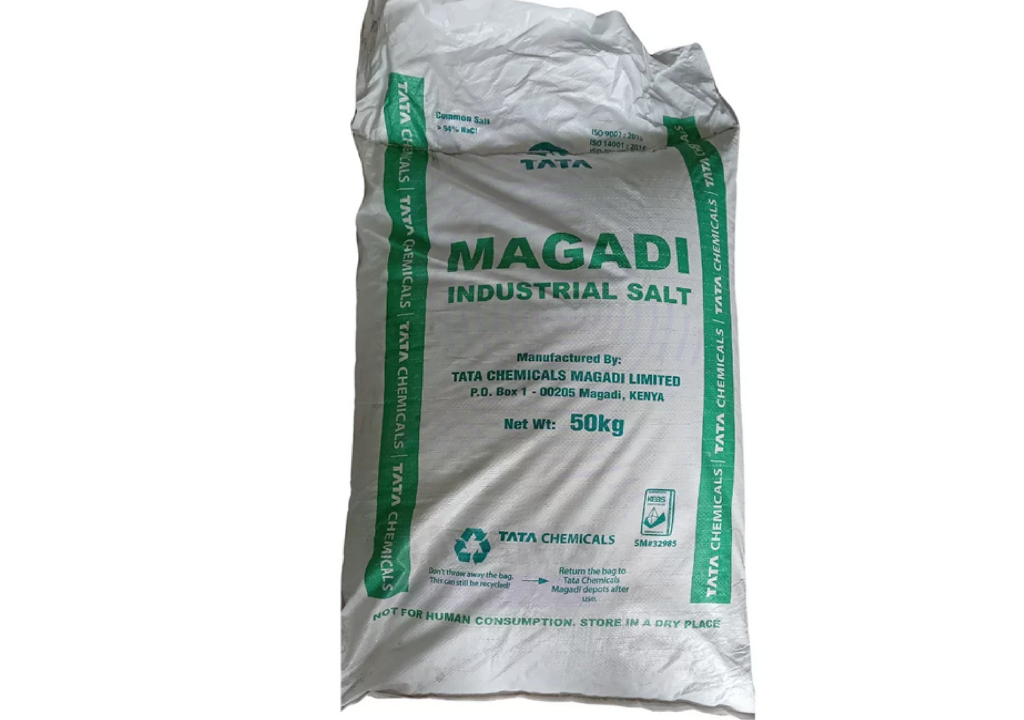Industrial Salt: The Backbone Of Manufacturing And Chemical Industries

When we think of salt, the first thing that comes to mind is likely the table variety — but industrial salt plays a vastly more powerful role in the global economy. From chemical processing and water treatment to textiles and de-icing roads, industrial-grade salt is a core raw material driving multiple industries.
Despite its simple chemical formula, NaCl (Sodium Chloride), the scale and variety of industrial salt’s applications are immense. It serves as a foundational ingredient in numerous chemical reactions and is critical to many production workflows across sectors.
What is Industrial Salt?
Industrial Salt refers to high-volume, non-edible sodium chloride that may vary in purity depending on its intended use. Unlike food-grade salt, industrial salt is not refined for human consumption and often contains natural trace minerals or is mixed with anti-caking agents or conditioning additives.
It can be mined from underground salt deposits, produced via solar evaporation of seawater, or manufactured through vacuum evaporation processes. Its texture may vary — from coarse rock salt to fine powdered forms — depending on application requirements.
Key Physical & Chemical Properties
- Chemical Formula: NaCl
- Molecular Weight: 58.44 g/mol
- Appearance: White crystalline solid (may contain grey or pink tint based on impurities)
- Solubility: Highly soluble in water
- Melting Point: 801°C
- Boiling Point: 1,413°C
- Density: 2.17 g/cm³
Industrial salt is chemically stable, abundant, and highly reactive under certain industrial conditions, especially in processes involving ion exchange, electrolysis, or brine formulation.
Major Industrial Applications of Industrial Salt
1. Chemical Manufacturing (Chlor-Alkali Process)
The largest share of industrial salt goes into the chlor-alkali industry to produce:
- Chlorine gas (Cl₂)
- Sodium hydroxide (NaOH or caustic soda)
- Hydrogen gas (H₂)
This electrolysis of brine is fundamental to making plastics (PVC), bleach, disinfectants, and various acids and alkalis.
2. Water Treatment & Softening
Salt is used in:
- Ion-exchange water softeners
- Regeneration of resin beds
- Disinfection processes in municipal and industrial water treatment plants
Its purity affects system efficiency and corrosion control.
3. De-Icing and Snow Control
Coarse industrial salt is a key de-icing agent for roads, highways, and airport runways. It lowers the freezing point of water, preventing ice formation and improving road safety.
4. Oil & Gas Drilling
In drilling fluids, salt helps stabilize boreholes, adjust fluid density, and minimize water influx from surrounding formations. It also enhances mud cake properties.
5. Textile & Dyeing Industry
Industrial salt acts as a fixing agent in dyeing processes by:
- Enhancing color absorption into fabric fibers
- Preventing uneven dye distribution
- Stabilizing pH in dye baths
6. Detergents and Soap Manufacturing
Salt is used to precipitate soap during production, regulate viscosity in detergent slurries, and act as a filler in powdered cleaning agents.
7. Leather Processing (Tanning)
Used in curing hides, salt prevents bacterial growth and prepares skins for tanning. It dehydrates the hide and preserves it before chemical treatment.
8. Agriculture and Feedstock
Salt is used in mineral licks, fertilizers, and as a soil amendment in certain regions. It’s also employed to regulate nutrient uptake in hydroponic systems.
Benefits of Using Industrial Salt
- ✅ Cost-effective and widely available
- ✅ Chemically stable for long-term storage
- ✅ Non-toxic and environmentally manageable when used responsibly
- ✅ Versatile across diverse industries
Storage and Handling Guidelines
While industrial salt is generally safe, proper handling ensures longevity and product integrity:
- Store in dry, moisture-free conditions to prevent caking and loss of flowability
- Avoid direct contact with metals to minimize corrosion
- Use protective gear when handling large volumes: gloves, goggles, dust masks
- For de-icing applications, store in covered bins or silos away from runoff zones
Sustainability and Environmental Impact
Industrial salt’s widespread use means it can have localized environmental effects, especially in de-icing and brine disposal. Key considerations include:
- Minimizing runoff into freshwater systems
- Using alternative blends (e.g., calcium magnesium acetate) in environmentally sensitive zones
- Recycling brine where possible in closed-loop systems
Final Thoughts
From behind the scenes of mega-industrial operations to day-to-day urban infrastructure, industrial salt remains a vital, adaptable, and cost-effective material. Its contribution to chemical synthesis, infrastructure maintenance, and product manufacturing cannot be overstated.
Whether you’re treating water, stabilizing a dye bath, or ensuring safe winter roads, industrial salt provides reliable performance backed by centuries of proven utility.


 Preservatives(food)
Preservatives(food) Flavor Enhancers
Flavor Enhancers Acidulants
Acidulants Sweeteners
Sweeteners Antioxidants
Antioxidants Colorants(food)
Colorants(food) Nutraceutical Ingredients (food)
Nutraceutical Ingredients (food) Nutrient Supplements
Nutrient Supplements Emulsifiers
Emulsifiers
 Collectors
Collectors Dust Suppressants
Dust Suppressants Explosives and Blasting Agents
Explosives and Blasting Agents Flocculants and Coagulants
Flocculants and Coagulants Frothers
Frothers Leaching Agents
Leaching Agents pH Modifiers
pH Modifiers Precious Metal Extraction Agents
Precious Metal Extraction Agents
 Antioxidants(plastic)
Antioxidants(plastic) Colorants (Pigments, Dyes)
Colorants (Pigments, Dyes) Fillers and Reinforcements
Fillers and Reinforcements Flame Retardants
Flame Retardants Monomers
Monomers Plasticizers
Plasticizers Polymerization Initiators
Polymerization Initiators Stabilizers (UV, Heat)
Stabilizers (UV, Heat)
 Antifoaming Agents
Antifoaming Agents Chelating Agents
Chelating Agents Coagulants and Flocculants
Coagulants and Flocculants Corrosion Inhibitors
Corrosion Inhibitors Disinfectants and Biocides
Disinfectants and Biocides Oxidizing Agents
Oxidizing Agents pH Adjusters
pH Adjusters Scale Inhibitors( water)
Scale Inhibitors( water)
 Antioxidants(cosmetic)
Antioxidants(cosmetic) Emollients
Emollients Fragrances and Essential Oils
Fragrances and Essential Oils Humectants
Humectants Preservatives
Preservatives Surfactants(cosmetic)
Surfactants(cosmetic) Thickeners
Thickeners UV Filters
UV Filters
 Fertilizers
Fertilizers Soil Conditioners
Soil Conditioners Plant Growth Regulators
Plant Growth Regulators Animal Feed Additives
Animal Feed Additives Biostimulants
Biostimulants Pesticides (Herbicides, Insecticides, Fungicides)
Pesticides (Herbicides, Insecticides, Fungicides)
 Active Pharmaceutical Ingredients (APIs)
Active Pharmaceutical Ingredients (APIs) Excipients
Excipients Solvents(pharmaceutical)
Solvents(pharmaceutical) Antibiotics
Antibiotics Antiseptics and Disinfectants
Antiseptics and Disinfectants Vaccine Adjuvants
Vaccine Adjuvants Nutraceutical Ingredients (pharmaceutical)
Nutraceutical Ingredients (pharmaceutical) Analgesics & Antipyretics
Analgesics & Antipyretics
 Analytical Reagents
Analytical Reagents Solvents(lab)
Solvents(lab) Chromatography Chemicals
Chromatography Chemicals Spectroscopy Reagents
Spectroscopy Reagents microbiology-and-cell-culture-reagents
microbiology-and-cell-culture-reagents Molecular Biology Reagents
Molecular Biology Reagents Biochemical Reagents
Biochemical Reagents Inorganic and Organic Standards
Inorganic and Organic Standards Laboratory Safety Chemicals
Laboratory Safety Chemicals Specialty Laboratory Chemicals(Special Laboratory Equipment)
Specialty Laboratory Chemicals(Special Laboratory Equipment)
 Demulsifiers
Demulsifiers Hydraulic Fracturing Fluids
Hydraulic Fracturing Fluids Scale Inhibitors(oil)
Scale Inhibitors(oil) Surfactants(oil)
Surfactants(oil) Drilling Fluids
Drilling Fluids
 Dyes and Pigments
Dyes and Pigments Bleaching Agents
Bleaching Agents Softening Agents
Softening Agents Finishing Agents
Finishing Agents Antistatic Agents
Antistatic Agents
 Admixtures
Admixtures Waterproofing Agents
Waterproofing Agents Sealants and Adhesives
Sealants and Adhesives Curing Compounds
Curing Compounds Concrete Repair Chemicals
Concrete Repair Chemicals Anti-Corrosion Coatings
Anti-Corrosion Coatings
 Surfactants(cleaning)
Surfactants(cleaning) Builders
Builders Enzymes
Enzymes Solvents (Cleaning)
Solvents (Cleaning) Fragrances
Fragrances
 Electronic Chemicals
Electronic Chemicals Catalysts
Catalysts Lubricants
Lubricants Photographic Chemicals
Photographic Chemicals Refrigerants
Refrigerants Automotive chemicals
Automotive chemicals Pyrotechnic Chemicals
Pyrotechnic Chemicals
 Biodegradable Surfactants
Biodegradable Surfactants Bio-based Solvents
Bio-based Solvents Renewable Polymers
Renewable Polymers Carbon Capture Chemicals
Carbon Capture Chemicals Wastewater Treatment Chemicals
Wastewater Treatment Chemicals
 Pigments
Pigments Solvents(paint)
Solvents(paint) Specialty Coatings
Specialty Coatings Binders/Resins
Binders/Resins Additives
Additives Driers
Driers Anti-Corrosion Agents
Anti-Corrosion Agents Functional Coatings
Functional Coatings Application-Specific Coatings
Application-Specific Coatings
 Fresh Herbs
Fresh Herbs Ground Spices
Ground Spices Whole Spices
Whole Spices Spice Blends
Spice Blends Dried Herbs
Dried Herbs
 Leavening Agents
Leavening Agents Dough Conditioners
Dough Conditioners Flour Treatments
Flour Treatments Fat Replacers
Fat Replacers Decoratives
Decoratives Preservatives(baking)
Preservatives(baking)
 Plasticizers & Softeners
Plasticizers & Softeners Reinforcing Agents
Reinforcing Agents Adhesion Promoters
Adhesion Promoters Vulcanizing Agents
Vulcanizing Agents Antidegradants
Antidegradants Blowing Agents
Blowing Agents Fillers & Extenders
Fillers & Extenders Accelerators & Retarders
Accelerators & Retarders















